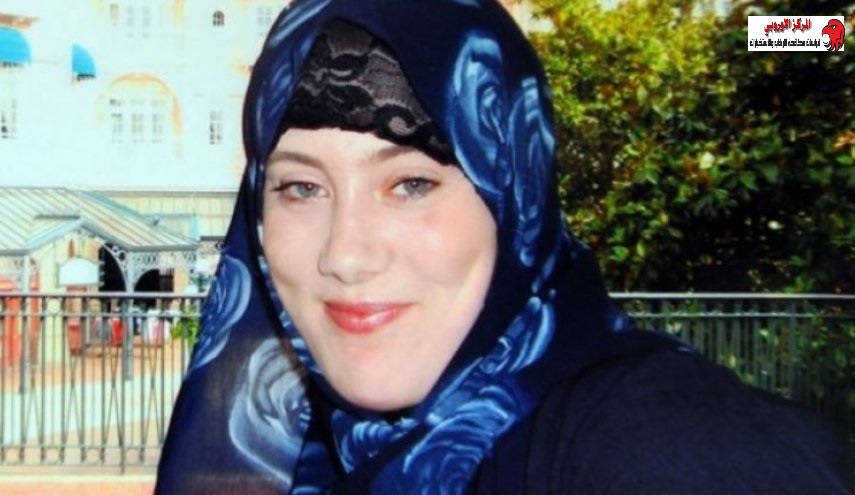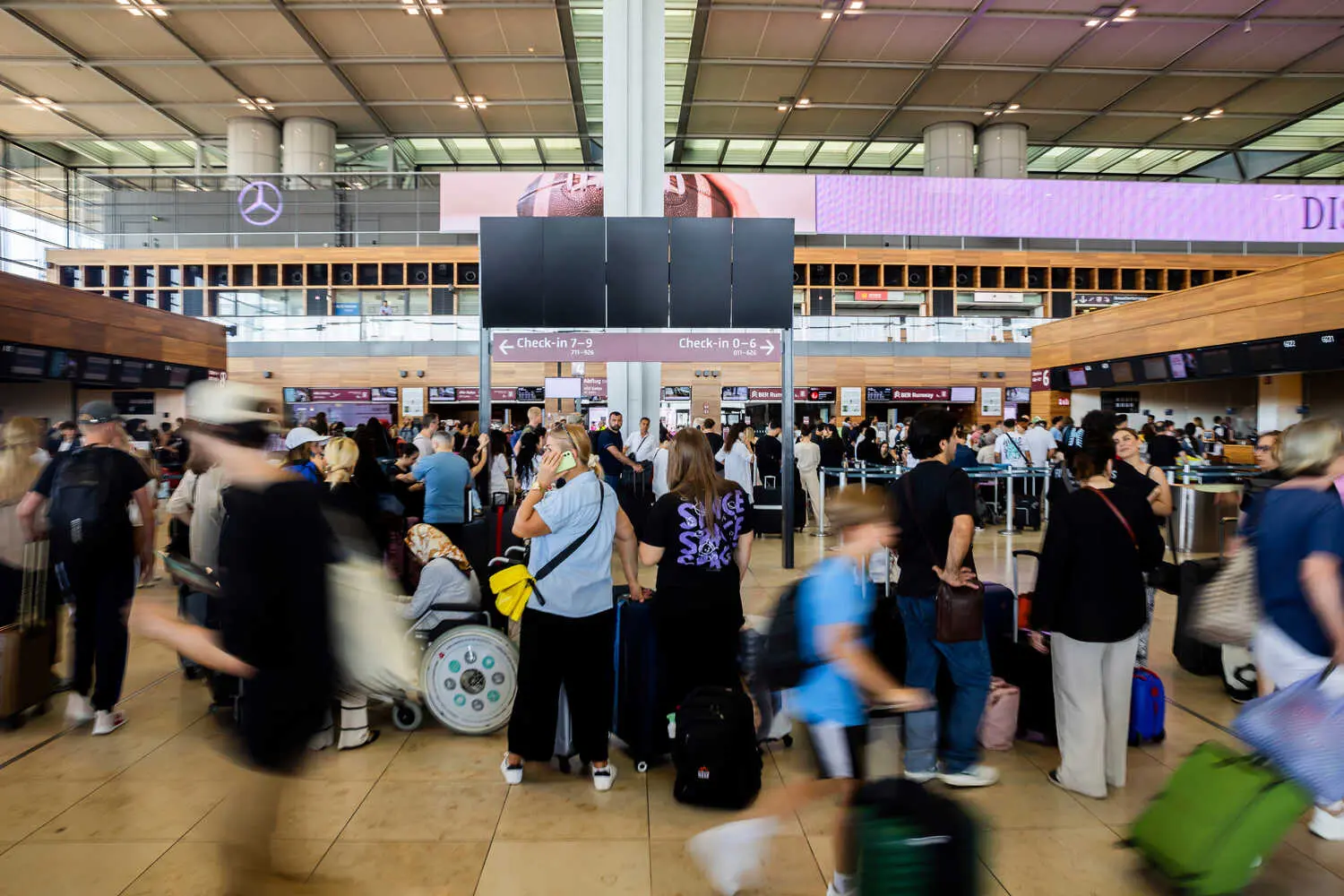By Dr.Mohammed Salah DJEMAL
Researcher at European Centre for Counterterrorism and Intelligence Studies / Germany and Netherlands
Publishing rights reserved to European Center for Counterterrorism and Intelligence Studies in Germany and Netherlands.
The phenomenon of suicide bombers has become a new reality in the world of terrorism in Africa, and in a new index of the expansion of the terrorist organization “ISIS” in the West African region, the local militias allied with it began to use women in terrorist operations.
However, the strategy of recruiting women and girls as suicide bombers has been used by various terrorist groups in different countries around the world. In regions such as the Lake Chad Basin region of Northern Nigeria, the Nigerian Islamic extremist group known as ‘Boko Haram’ has been showing a trend in using an increased number of women and girls suicide bombers compared to any other terrorist groups in history. According to the United Nations Office for the Coordination of Humanitarian Affairs (OCHA) since the violent conflict between military forces and non-state armed groups broke out in 2009, over 20’000 people have been killed, and an alarming number of women and young girls have been abducted and enlisted as suicide bombers. A report conducted by Warner and Matfess (2017) for the United States Military Combating Terrorism Center at West Point, showed that between 2011 and 2017 Boko Haram has deployed a total of 434 suicide bombers from which at least 56% were women.1
An Overview on Boko Haram’s Femal Suicide Bombers
On June 8, June 2014, Boko Haram sent the first female suicide bomber to the Nigerian Army’s 301 Battalion Barracks in Kombi, Kombi state, and the girl detonated the explosives concealed under her veil, killing herself and killing a soldier as well. This was followed by a 25-month bombing in an energy depot in Lagos, which was also implemented as a woman. As of January 20, 2015, the death toll of female suicide bombings has reached 16 suicide bombings in Nigeria. According to the method, fourteen explosions were made through objects loaded with improvised explosive devices (IEDs), and only one was through a car bomb with improvised explosive devices (IEDs). Of the 17 actual explosions, 15 girls were able to detonate their shipments while two were arrested. With the arrest of a girl loaded with explosives strapped to her body, Kano became the state with the most cases (seven cases) followed by Borno and Yoby states. Out of the seven cases in Kano, six girls were able to blow themselves up while one was affected after seeing their colleagues blew themselves up in Kano State 2014.
A report published in August 2017 by the Combating Terrorism Center at West Point found that at least 56 per cent of the group’s Total suicide attacks between April 2011 and June 2017 were Committed by women and girls. This number could well have been Higher, as the gender of attackers was known in only 72 per cent of Attacks during that period. By deploying such a high number of Female suicide bombers in that period, Boko Haram became the Militia that has been used more female suicide bombers than any other.2 The GEM data collated break down Boko Haram’s attacks in 2017 by faction. The findings show that the groups adhered to their ideological expositions in practice. In 2017, Barnawi’s followers developed their capabilities to carry out attacks, and Shekau’s faction continued its brutality. The data show that Shekau’s faction was behind 93 incidents involving female suicide bombers. Of these, eight had both male and female cooperation on suicide missions. Some 139 women detonated, and a further 34 were intercepted or failed to detonate. Shekau’s attacks by women resulted in 3.1 deaths per attack, according to the data. Operations carried out by men caused marginally fewer deaths, at 2.6 per attack. For Barnawi’s faction, there were no suicide attacks (attempted or completed) by women or children, according to the data. This research indicates that the factions have stayed true to their ideological strictures.3 The kidnapping in 2018 of girls from the town of Dapchi further demonstrates the difference between the camps. In February 2018, members of the Barnawi faction abducted about 110 girls from their school dormitory in a way that recalled the Chibok kidnapping carried out under Shekau’s leadership. About a month later, Barnawi’s followers returned their victims to the town from which they had been kidnapped.4
The graph below shows the number of identified genders who committed suicide bombing attacks for Boko Haram in 2014 and 2017.
In their report, Warner and Matfess (2017) explain that girls are four
to one time more likely to be used to carry out suicide bombing attacks than boys. UNICEF has also observed a rise in the use of girl suicide bombers and estimates that since 2014, 117 children, more than 80% of them girls, have been used as ‘human bombs’ by Boko Haram to conduct suicide attacks across the Lake Chad Basin region. According to the report, the children are kept in military barracks and do not receive any education nor psychological support and are forced to choose ‘roles’. Boys, for example, learn to ride otorbikes, how to fight or have to watch other abductees to prevent them from escaping. Girls, on the other hand, will be ‘married off’ to fighters, are being raped and have to conduct household chores.5
2014-2015.. The boom of Boko Haram’s New Terrorist Tactic
This is a list of the main “suicide” attacks in its boom (2014-2015), in which Boko Haram has used women:6
– June 8, 2014: A middle-aged woman killed a policeman in a suicide attack on a military barracks in Gombe, Nigeria.
-June 25, 2014: A woman detonated a bomb after her car parked next to the gasoline tanker at a fuel depot in Lagos, Nigeria.
-July 27, 2014: A teenager with an explosive device hidden beneath her veil blew herself up on the campus of Kano University, injuring five police officers.
– July 28, 2014: A woman killed three people after a bomb blew herself up in a queue to buy kerosene in Kano.
-July 28, 2014: Teenager hit six people after bomb exploded at a shopping mall in Kano.
-July 30, 2014: A teenager killed six people after she blew herself up amid a crowd of students on the university campus in Kano.
-July 31, 2014: A woman killed three people after she blew herself up at a college in Kano, Nigeria.
-November 16, 2014: A suicide bomber killed at least 12 in an attack on the mobile phone market in March Nigeria.
-November 26, 2014: Two suicide bombers killed 45 people in a crowded market in Maidoguri.
-December 1, 2014: Two women suicide bombers kill five in Maidoguri.
-December 10, 2014: Two suicide bombers kill four in Kano.
-January 10, 2015: Suicide bomber killed 19 people in Borno attack.
-February 12, 2015: A woman killed seven people in a suicide attack in a crowded market in the Nigerian state of Borno.
-February 15, 2015: A woman killed at least seven people in a bomb attack on a crowded bus station in Damatoro.
-February 22, 2015: A young girl killed five people and injured scores in a bomb attack on a security checkpoint outside the market in botscom.
-March 12, 2015: A woman killed at least 34 people after a bomb exploded in a market in Maiduguri.
-May 16, 2015: A woman killed 10 people in a suicide attack in Damatoro, Nigeria.
-23 June 2015: A teenager killed 20 people at a bus stop in Maiduguri after blowing herself up.
-24 June 2015 – A 12-year-old girl killed 10 people after she detonated an explosive vest in a market in Yobe state, Nigeria.
-July 3, 2015: The Nigerian army said six female suicide bombers killed dozens of civilians and one soldier in separate attacks in the village of Zabamari Mona near Maiduguri.
-July 3, 2015: A suicide teenager killed 12 worshippers when she blew herself up in a mosque in the northeastern Nigerian city of Malary.
-July 5, 2015: A suicide bomber killed five people in a Christian church in Botsukum, Nigeria.
-July 7, 2015: A woman killed at least 20 people after she detonated her explosive belt in a crowd of government workers in the Nigerian city of Zaria.
-July 12, 2015: Two suicide bombers killed 10 civilians and a Canadian soldier in an attack on the border town of Futokal.
-July 16, 2015: A female suicide bomber killed nearly nine people who were gathered in a market on Eid al-Adha in Damatoro.
-July 17, 2015: A 10-year-old girl with nearly 50 people was killed in two separate attacks in the city of Damatoro, Nigeria.
-July 22, 2015: At least two young girls were killed in two separate suicide bombings in the capital city of Maro, Northern province of Cameroon.
-July 25, 2015: A 12-year-old girl killed 20 people in a suicide attack in a popular pub in Cameroon.
-August 25, 2015: A 14-year-old girl killed five people in a suicide attack on a bus stop in Damatoro City.
-September 3, 2015: Two women suicide bombers killed 30 people and injured more than 100 in an attack on the local bus in the Cameroonian city of Kerua, near an army camp.
-September 20, 2015: A police officer and two civilians were killed when two women suicide bombers blew themselves up in the Cameroonian city of Mora.
Why Women in Suicide Bombing ?
Boko Haram relies heavily on women because they are often able to escape the security grip, more than men. A security man is not allowed to inspect a woman in the countries where the group is active, which also indicates a security gap in the security forces in these African countries. Young teenage girls and pregnant women are more likely to be able to implement the goal because they are (socially) beyond suspicion.
The group relies more on female suicide bombers than men because they are a cheap “labour” and a means by which men are “saved”. It was reported that the group paid a small amount of suicide bombers (about 64 US cents) to buy a meal before the operation was carried out. It was not possible to ascertain the amount of money received by the families of female suicide bombers as compensation, if they were originally received.
Another advantage of employing female suicide bombers is the possibility of concealing the explosive material under the cloak of women, which covers most of the body. It also facilitates the concealment of explosives in their bags or through their children on their backs. In view of all these points that the suicide bomber enjoys and which facilitates her mission, suicide bombers within the group sometimes disguise women’s bodies so they can escape checkpoints and prosecute security personnel.
In the end, using female terrorism is probably a tactic that Boko Haram will not abandon in the near future. Whether the use of Boko Haram for female suicide bombers is a sign of despair or that to show strength, there is a need for serious discussion, but what is certain is that the movement will continue to discover new methods and also mix those methods with old ones as part of its violent campaign against all the easy targets And difficult in Nigeria. As Nigeria is coming to a general presidential election in February February 2015, Boko Haram may launch suicide bombers to target political rallies, polling stations or even high-level election-related facilities. The tactic of employing new suicide bombers calls for increased vigilance on the part of the people, as well as coordinated efforts by the Government. Emphasis should be placed on the integration of women in anti-radicalization interventions, the expansion of gender-sensitive recruitment, as well as training and coordination among security agencies to neutralize Boko Haram and its channels for women’s placement and effective identification, as well as the destruction of shelters used to entrench The roots of the movement
References
1-Kossiwa J. Tossoukpe, ” Socio-comprehensive Analysis on Woman Suicide Bombers in Boko Haram : Victims or Agents of Political Change ? “, January 7, 2019, file:///C:/Users/Islem_X/Downloads/Socio-comprehensiveAnalysisonWomenSuicideBombersinBokoHaramVictimsorAgentsofPoliticalChange%20(1).pdf
2-Jason Warner and Hilary Matfess, “Exploding Stereotypes: Unexpected Operational and Demographic Characteristics of Boko Haram’s Suicide Bombers”, Combating Terrorism Center at West Point, August 2017, https://ctc.usma.edu/app/uploads/2017/08/Exploding-Stereotypes-1.pdf.
3-Ibid.
4- Audu Bulama Bukarti, “How to Stop Boko Haram’s Kidnappings”, Tony Blair Institute for Global Change, 23 March 2018, https://institute.global/ insight/co-existence/how-stop-boko-harams-kidnappings.
5-Jason Warner and Hilary Matffess, Op.Cit.
6-Caleb Weiss, ” The Islamic State West Africa continues to utilize women as suicide bombers “, September 21, 2015, https://www.longwarjournal.org/archives/2015/09/the-islamic-state-west-africa-continues-to-utilize-women-as-suicide-bombers.php
European Center for Counterterrorism and Intelligence Studies in Germany and Netherlands.
Dr.Mohammed Salah DJEMAL





